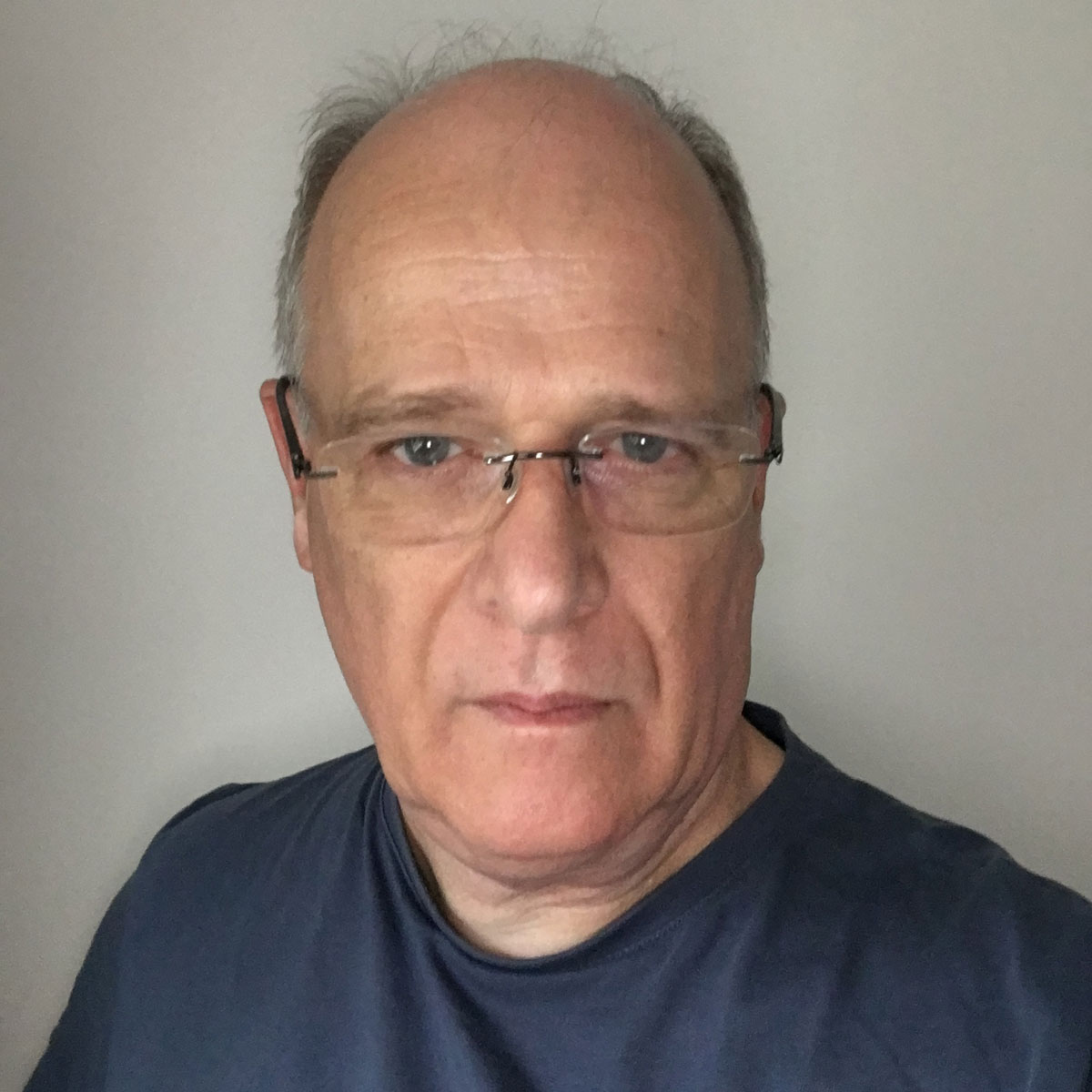The story of the JTM45, Marshall’s first amp and a holy grail of rock guitar
Wartime crooner, big band drummer and legendary shop owner, Jim Marshall’s life was shaped by music. In 1962, he and his team shaped music with an amp that changed everything
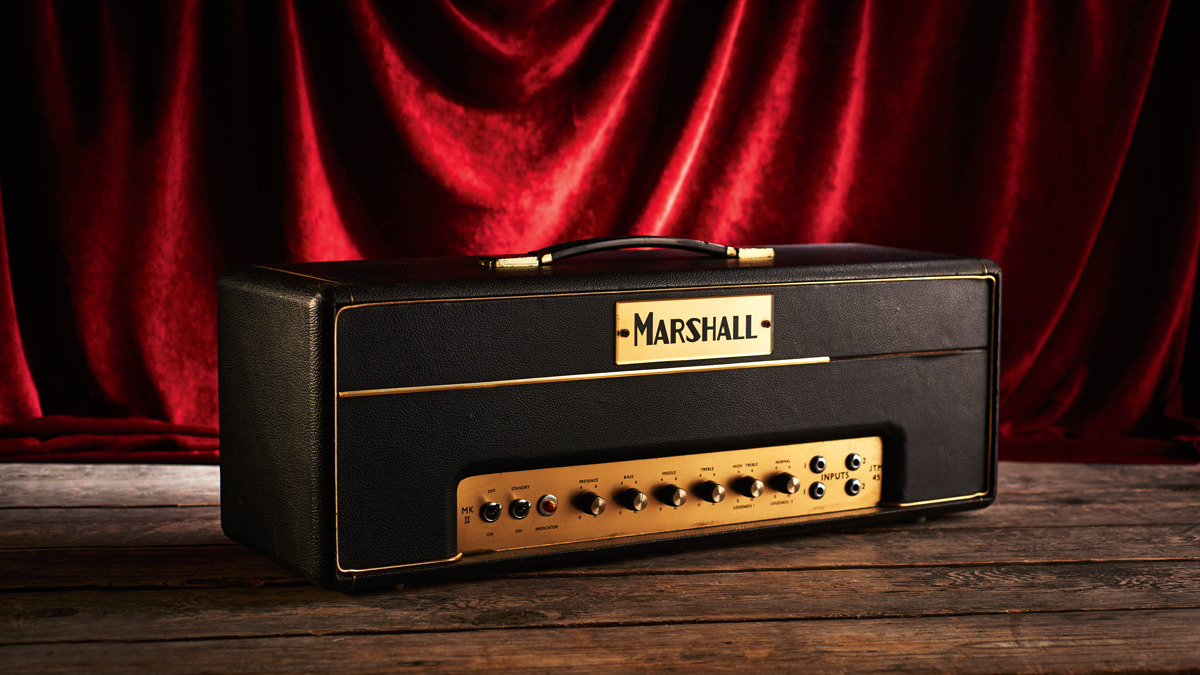
As time draws on, the story of the creation of ‘Amp Number One’, the very first Marshall JTM45, is turning into legend, with truth and myth sometimes interwoven depending on which version you read.
When this writer was privileged to meet and spend a day with Jim Marshall back in early 2001, he was still working 12-hour days at the Bletchley factory – usually the first to arrive and often the last to leave.
Jim’s own version of events, which at that time had taken place four decades earlier, was well rehearsed as he’d obviously recited it countless times to journalists from all over the world.
Jim Marshall suffered from ill health as a child and he was exempted from military service in World War II because of it. He became a popular singer on the London club circuit and doubled up on drums to earn extra money, as civilian musicians were in short supply during the war.
With petrol rationed, he rode a bicycle to gigs, carrying a homemade PA system in a cart so he could make himself heard. Despite his success as a vocalist, drumming became Jim’s main focus and, like many other young drummers of that era, his idol was the American Gene Krupa, whose electrifying performances and good looks earned him frequent cameo appearances in Hollywood musical films, making him an international star.
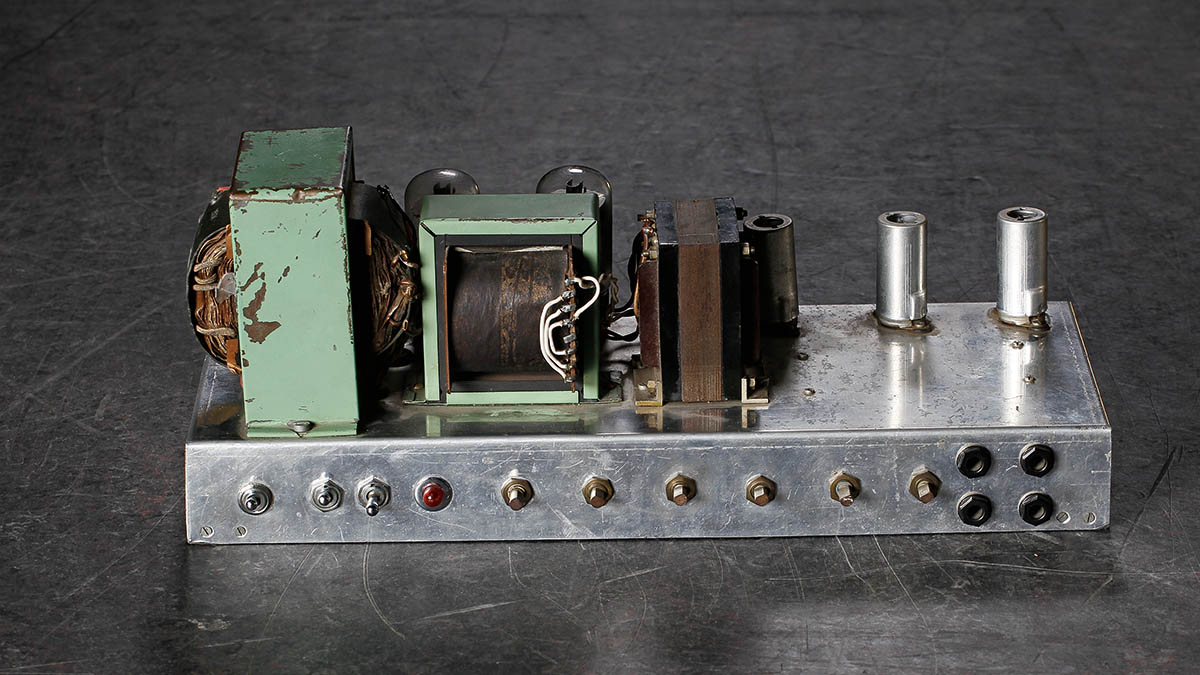
After the war, Jim took lessons from Max Abrams, who was the top teacher in the UK at that time. Jim practised hard and swiftly became good enough to teach drums to others.
By the 1950s he was working as a full-time professional musician and teacher, earning enough money to open his own music shop in Uxbridge Road, Hanwell, in 1960. The local music scene was buzzing and it was a time of tumultuous change as rock ’n’ roll replaced the pop crooners.
Get The Pick Newsletter
All the latest guitar news, interviews, lessons, reviews, deals and more, direct to your inbox!
Established stars such as Jim Reeves, Perry Como and Frank Sinatra were being ousted from the charts by brash young artists including Eddie Cochran, Gene Vincent, Buddy Holly and Elvis Presley – who all played guitar.
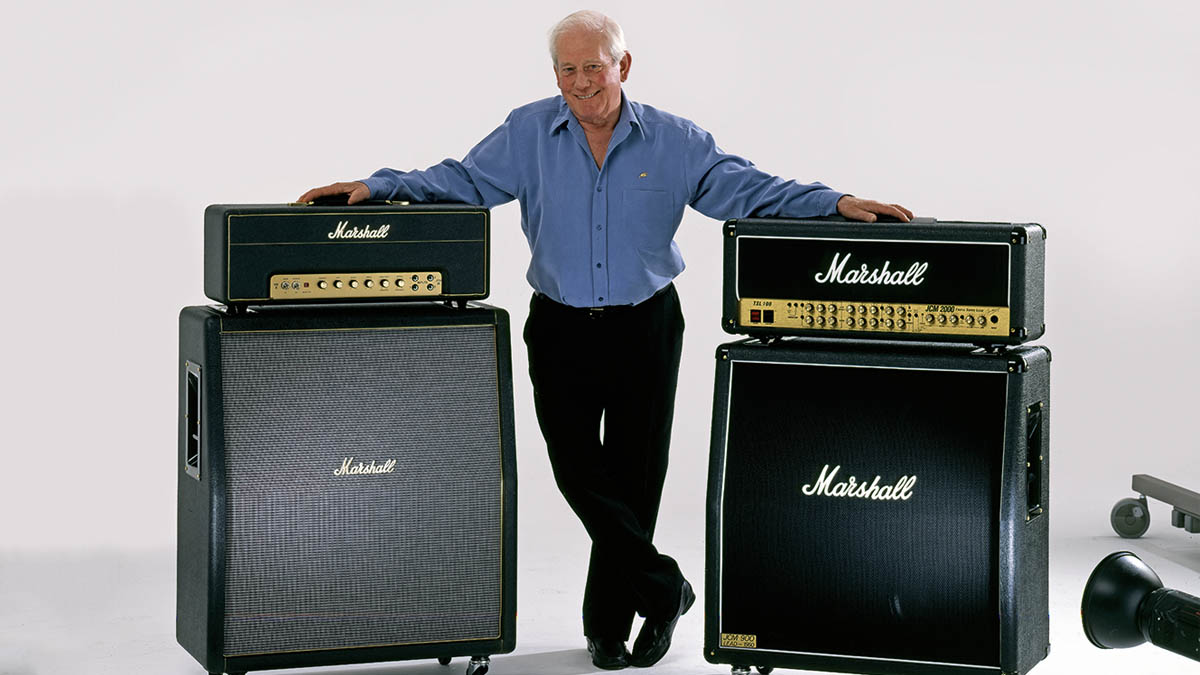
Jim Marshall’s drum shop quickly adapted to the changing trend and branched out into guitars; the drummers Jim taught would often bring in their guitarists and the shop quickly became a focal point and melting pot for local musicians.
Right place, right time
The West London location of the shop was a classic example of being in the right place at the right time.
Jim’s customers in the early years included Pete Townshend, Ritchie Blackmore, Big Jim Sullivan and later on a young Eric Clapton, while among his drum students were Keith Moon and Mitch Mitchell, who would go on to play with Jimi Hendrix.
The shop was also less than two miles from the legendary Ealing Blues Club, which was opened in March 1962 by Alexis Korner and Cyril Davies and instantly became the epicentre of the British electric rhythm and blues scene, hosting Pete Townshend’s High Numbers (which became The Who), The Rolling Stones (who met each other at the club), Cream, Manfred Mann, The Yardbirds, John Mayall and Fleetwood Mac, to name just a few.
Back then it wasn’t easy to import the American guitars and amps that Jim’s customers craved.
Clearly, there was room for a homegrown competitor, and repair tech Ken Bran suggested they try building their own, following numerous requests from local musicians. Jim was always careful to listen to what his customers wanted and, having already built several PA and bass guitar cabinets, agreed to the project.
One of the most coveted American amplifiers in the UK at the time was Fender’s tweed 4x10 Bassman combo, and according to some stories an example was acquired and reverse-engineered to understand how it was put together.
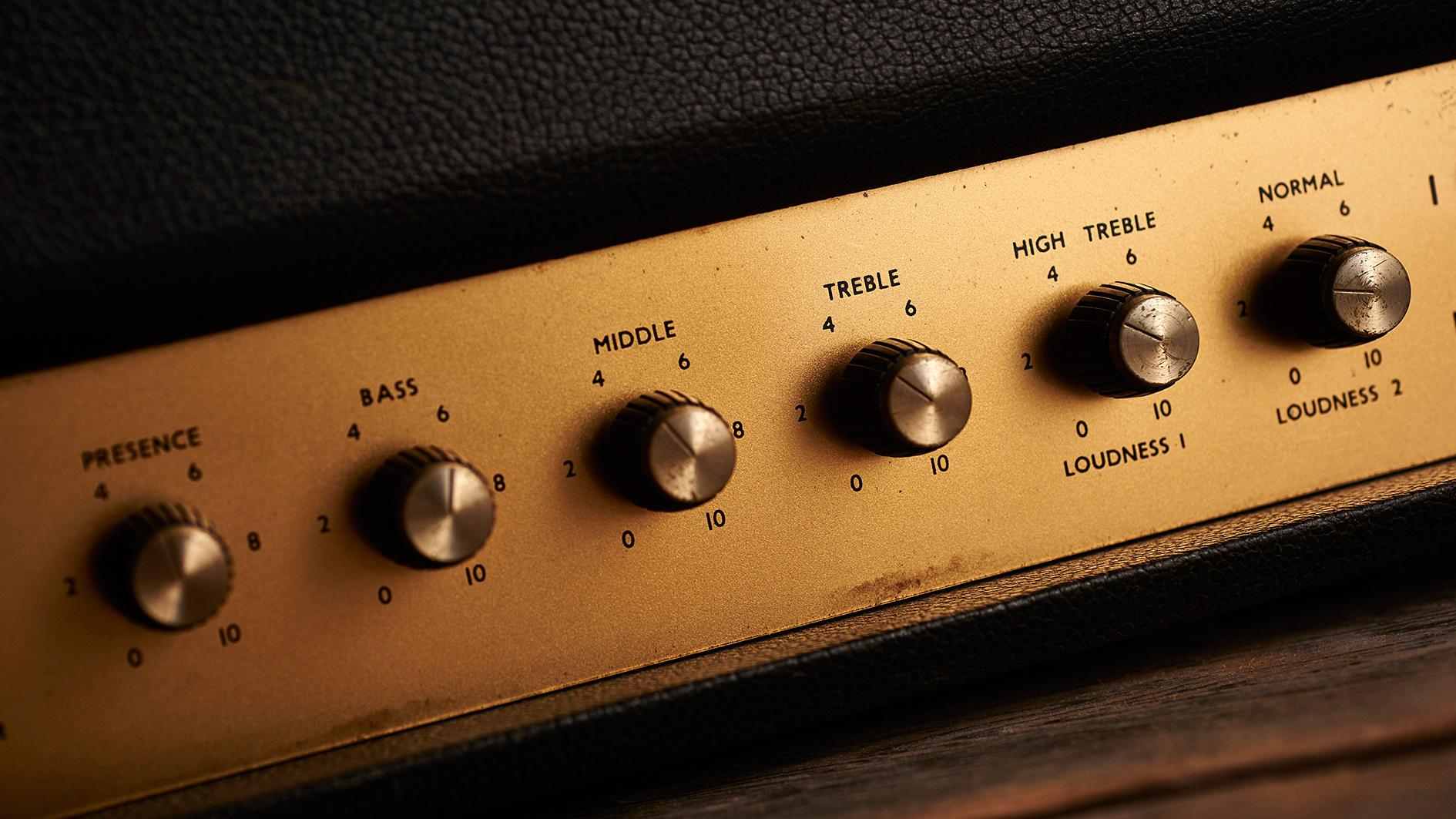
Bran co-opted two other electronics wizards into the project: a brilliant teenager called Dudley Craven and Ken Underwood, who were both apprentices at EMI, while Ken Bran had worked on radio equipment for Pan Am at Heathrow.
All three were amateur radio enthusiasts and knew each other through the local ham radio network, meeting weekly at Greenford Radio Club and often going on to a local Wimpy bar in Ealing afterwards.
Radio GaGa
Amateur radio and audio are closely linked, and for us there’s no doubt that all three had the necessary technical chops and inventiveness to create something that went beyond the Bassman circuit.
They shared out the work between them, with Jim fabricating the chassis and cabinet, Ken Bran producing the tag boards, Dudley Craven doing the wiring and Ken Underwood joining later on final assembly. Because of a lack of space at Jim’s music shop, most of the fabrication was carried out in their garden sheds.
Dudley is thought to have experimented with 6V6s at first, before discounting them and returning to the 5881 used in the 5F6-A Bassman circuit. In total, six prototypes were made and it was number six, with a separate closed-back cabinet loaded with four 12-inch Celestion speakers, that made Jim Marshall exclaim, “That’s it! That’s the sound.”
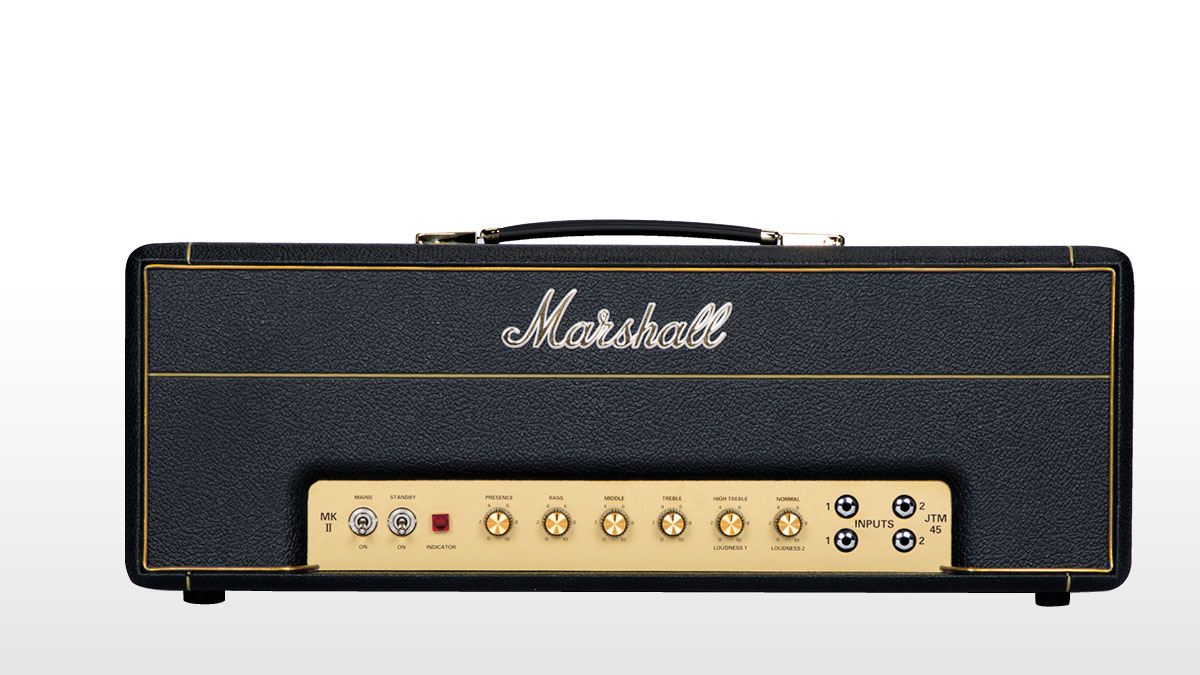
According to legend, on a Sunday in September 1962, a band was assembled at the Ealing Club to try out the new ‘loud sound’ that Pete Townshend and others had been asking Marshall to build, featuring Mitch Mitchell on drums, who was by now working for Jim, and Jim’s son Terry on saxophone.
Christened the JTM45, for James and Terry Marshall, combined with the amplifier’s nominal output power of 45 watts, the new amp immediately appeared in Jim’s shop and pulled in nearly 30 orders after its first day on display.
Almost overnight, the JTM45 became the amp of choice for the Ealing-based rhythm and blues movement and Jim rode on the wave of its success, opening a second shop in March 1963 at number 93 Uxbridge Road.
However, the manufacturing operation quickly outgrew the new premises, leading Marshall to open the first dedicated factory in Silverdale Road, Hayes, in June 1964.
Even after Jim’s departure from retail into full-time manufacturing, the JTM influence that made Hanwell and Ealing such an important focal point for British musicians continued for decades, with three other famous shops opening in the area: Tempo Music, which later became Flying Pig Music, was a next-door neighbour at 72-74 Uxbridge Road, while Peter Cook’s Guitar World, owned by the famous luthier and managed by Trevor Newman, was a short walk away at 69 Station Road.
Visitors to the area today can find two blue plaques, one commemorating the sale of the very first Marshall amp in 1962 at 76 Uxbridge Road, and another a short walk down the road at 42A The Broadway, marking the place where the Ealing Club was founded.
While there’s nothing on the plaques to link them, there’s no doubt both events contributed to each other’s success, changing the world in the process. Meanwhile, Amp Number One – one of the Holy Grails of rock guitar – was reacquired by Marshall several years ago and now occupies pride of place in the Marshall museum at the company’s Bletchley factory.
1964 Marshall JTM45 anatomy
A look under the hood at valves and circuitry used in the JTM45’s early history
The JTM45 shares much of its DNA with Fender’s Bassman 4x10 combo, in particular the 5F6‑A circuit. This was the last ‘tweed’ update, introduced around 1958 and phased out in 1960.
The Bassman was originally intended to complement Fender’s new Precision bass guitar, although as it evolved from a 1x15 TV-fronted combo to the more recognisable narrow-panel 4x10 open-backed design, many guitarists discovered it was also a formidable partner for the six-string instrument.
It was this amp that Ken Bran and Dudley Craven used as the basis for the JTM45, and the Marshall’s circuitry is more or less identical, with the same ‘long-tailed pair’ phase inverter.
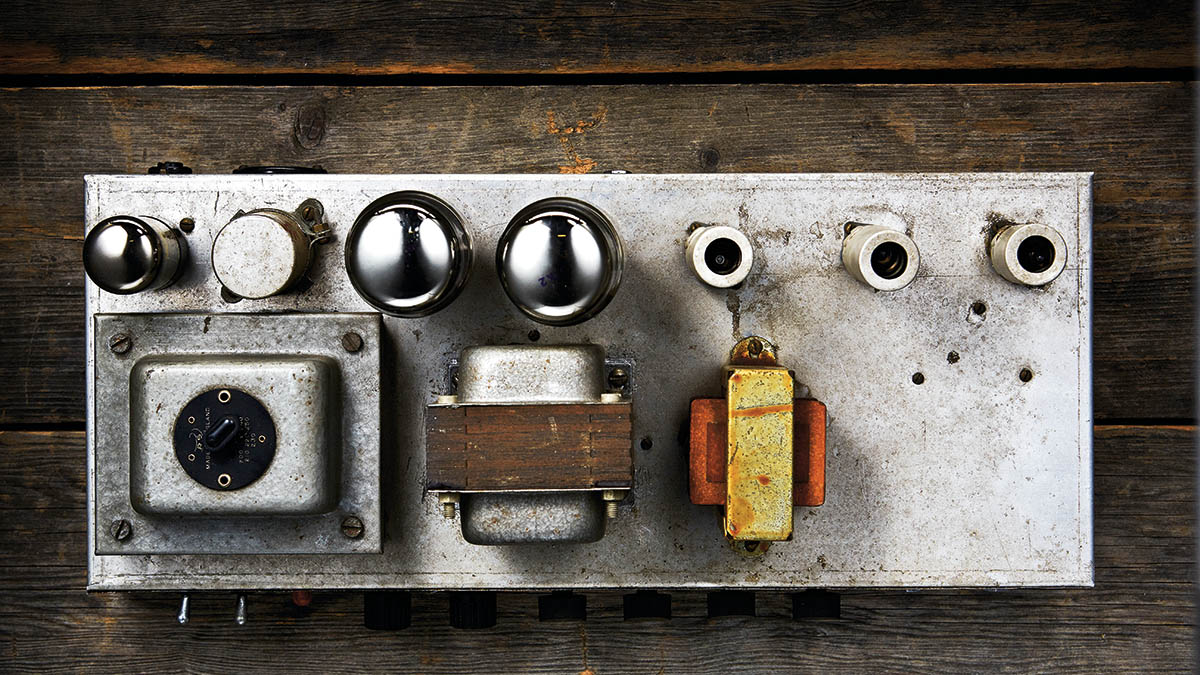
However, there were a few important differences. The first valve in the JTM45 preamp was changed from a 12AY7 to a 12AX7, which has around double the gain. Fender used the 12AY7 to maximise clean headroom, while Marshall was chasing a hotter sound so the 12AX7 was a logical substitution. Negative feedback was increased to tighten up the speaker response and add extra highs.
There were many other small changes as Marshall would tweak the circuit for individual clients, or vary it depending on component availability – some amps had a second ‘bright’ capacitor on the high treble channel, others didn’t. It’s quite possible that no two heads were identical in those early days.

Possibly the most famous custom order was the Gold Lion KT66-powered open-back 2x12 combo version built for Eric Clapton, who requested a Vox-sized combo that would fit into the boot of his car.
This was the amp that became the Model 1962, which Clapton turned up to 11 to record the famous 1966 ‘Beano’ album with John Mayall’s Bluesbreakers, bringing the Ealing Marshall sound to an international audience and profoundly changing the electric guitar’s place in popular music.
Other significant changes were mostly down to geography and economics as Marshall used British suppliers for parts, while Fender’s components were sourced in the USA. The Bassman’s 5881 valves were made by Tung-Sol Lamp Works of Newark, New Jersey, who also invented the 6550.
The 5881 was a high-spec military version of the 6L6GB, with a maximum plate dissipation of 23 watts compared with the 30 watts of the later 6L6GC, and a lower maximum plate voltage.
They were neither easy nor cheap to import back in the early 1960s and after trying 6L6s on some amps, Marshall replaced the 5881 with the KT66, a high-quality British version of the 6L6 designed and made by Marconi-Osram Valve (M-OV).
The KT66 valves sounded superb but were expensive, prompting a change to the cheaper, more plentiful EL34 around 1966. This altered the amp’s sonic character as it became more powerful, with uprated transformers and silicon diodes later replacing the GZ34. This led to the rare ‘Black Flag’ JTM50 ‘transition’ model.
Loudspeakers and cabinets were another significant difference. The Bassman used four 10-inch Jensen speakers in an open-backed combo cabinet, while Marshall chose to make a separate head for the amplifier and combine it with a closed-back cabinet loaded with four Celestion G12s – the first step on the way to the universally recognised Marshall stack.
Nick Guppy was Guitarist magazine's amp guru for over 20 years. He built his first valve amplifier at the age of 12 and bought, sold and restored many more, with a particular interest in Vox, Selmer, Orange and tweed-era Fenders, alongside Riveras and Mark Series Boogies. When wielding a guitar instead of soldering iron, he enjoyed a diverse musical career playing all over the UK, including occasional stints with theatre groups, orchestras and big bands as well as power trios and tributes. He passed away suddenly in April 2024, leaving a legacy of amplifier wisdom behind him.
"I never use my tube amp at home now, because I have a Spark Live": 5 reasons you should be picking up the Positive Grid Spark Live in the massive Guitar Month sale
“Our goal is to stay at the forefront of amplification innovation”: How Seymour Duncan set out to create the ultimate bass amp solution by pushing its PowerStage lineup to greater heights



